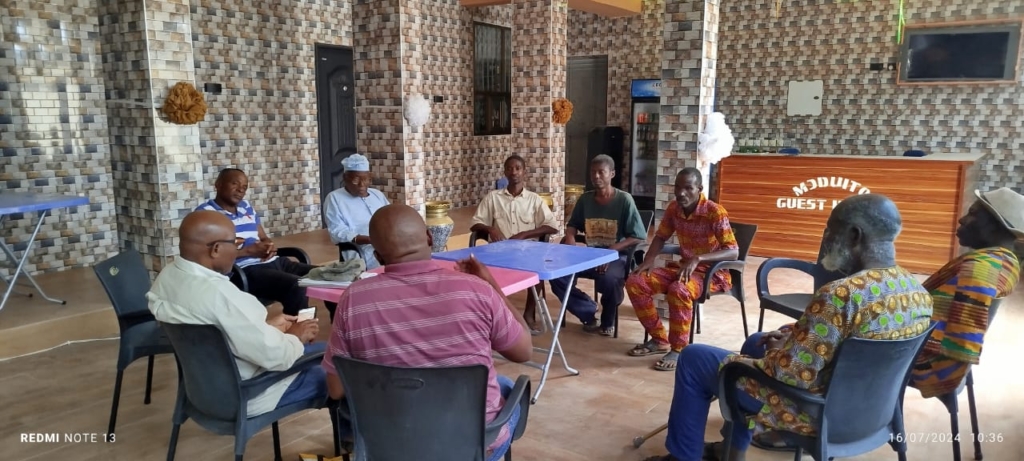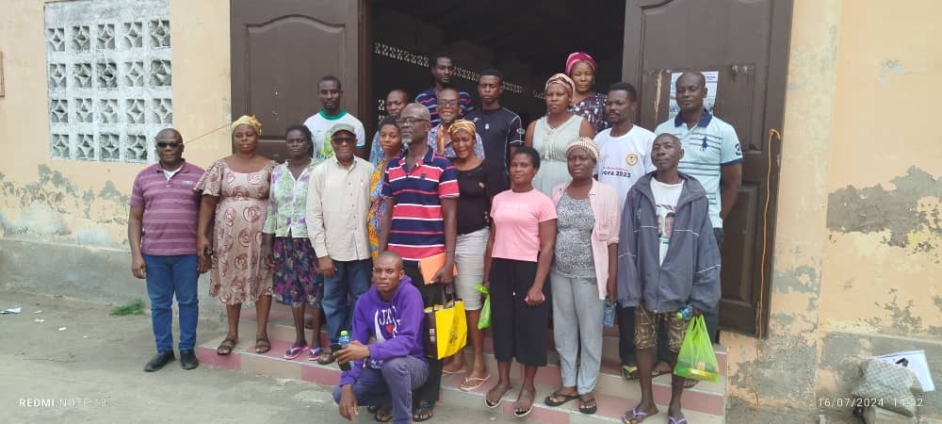In a significant move towards sustainable conservation, The Development Institute in collaboration with the Wildlife Division of Forestry Commission and the Keta Municipal Assembly, is spearheading an innovative project to protect the habitats of migratory birds in the Volta Delta.
This initiative leverages the Community Resource Management Areas (CREMA) mechanism, which aims to give local communities greater control over the governance and management of their natural resources.
The Anlo-Keta Lagoon Complex Ramsar site (AKLCRS) is a critical wetland identified on August 14, 1992, and officially recognised in 1999 under national legislation (L1 16-59, 1999 on wetlands).
Despite its importance, the site faces numerous challenges, including the unsustainable use of resources, illegal fishing practices, and poaching of migratory species like sea turtles and birds. These issues have hindered the effective management of the Ramsar site, leading to a feeling of disenfranchisement among local communities regarding their rights to self-governance and resource management.
Emmanuel Gemega, the Municipal Chief Executive (MCE) of Keta, highlighted the significance of community involvement in conservation efforts. "The CREMA mechanism is a game-changer for us. It empowers our communities to take ownership of their environment and resources, which is essential for sustainable development."
The Collaboration
Since 2016, The Development Institute and the Wildlife Division have been working closely to implement the CREMA mechanism in the AKLCRS. This partnership has already seen the establishment of species-specific CREMAs, such as the Avu Lagoon CREMA for the West African Sitatunga and the Angwa Lagoon CREMA for sea turtles and manatees.
However, there is currently no dedicated site for migratory birds, despite the AKLCRS being one of the most significant wetland areas for water birds on Ghana's coast.

Clemence Sepenoo Kugbey, Director of Finance, Admin & Partnership of the Development Institute emphasized the importance of this project, stating, "Our goal is to promote community-led governance in the conservation of migratory birds. By doing so, we are not only protecting biodiversity but also enhancing the livelihoods of local communities."
The project and its objectives
The primary objective of the project is to establish a CREMA for the Afiadenyigba and its surrounding areas, including Anyako, Havedzi, Seva, and Afiadenyigba. This initiative aims to create a functional community steward system focused on bird conservation, promote environment-friendly livelihood options, and document and share lessons learned to facilitate upscaling.

Key actions of the project include developing informational resources, setting baselines through ethnobiology and ecosystem studies, engaging in the CREMA development process, and establishing sustainable livelihood options and community finance systems. A significant focus will be on involving women and youth in the CREMA governance structures.

Expected outcomes
The project is expected to yield several critical outcomes, including a functional CREMA for both resident and migratory birds, and sustainable economic and livelihood development for participating communities, directly benefiting 40 people and indirectly benefiting 200.
There will be an annual sharing of lessons, knowledge, and skills among stakeholders, enhancing project sustainability and potential replication in other regions.
Long-term vision
The project, scheduled to run from February 1, 2024, to January 31, 2025, aims to ensure sustainable development by empowering local communities through the CREMA mechanism.
By enhancing governance and management capabilities, the project will contribute to environmental and economic development, setting a model for future scalability.
In conclusion, the collaborative efforts between The Development Institute, the Keta Assembly, and the Wildlife Division represent a promising step towards conserving the Volta Delta's rich biodiversity while fostering sustainable community development.
Latest Stories
-
Mahama orders arrest of fake anti-galamsey taskforce extorting miners
5 minutes -
Joseph Kobina Ade Shino Coker
12 minutes -
Royal Sweet Limited signs up for JoySports Invitational Tournament 2025
42 minutes -
Ghanaian movie industry wasting talent – Gloria Sarfo
44 minutes -
Ho West MP secures 100 international scholarships for constituents
1 hour -
Bank of America’s Bernard Mensah discusses AI, jobs and global economic pressures
1 hour -
President Mahama announces plans to build six modern sports stadia
1 hour -
Expert wants gov’t to extend NSS allowance beyond service period
1 hour -
Western North: Mahama pledges action over ‘empty slogans’
1 hour -
Ghanaian AI startup Fornix Labs pilots tool to support workload of doctors
2 hours -
CCTV captures woman allegedly stealing baby at Ajumako market
2 hours -
WAFU B Boys Cup: Black Satellites take on Benin U-20 in second group game
2 hours -
Togbe Afede lauded for exemplary leadership during Asogli Yam Festival
2 hours -
Gov’t to cancel Teacher Licensure Exam on August 30
2 hours -
Ennobled Foundation webinar empowers Ghanaian youth to leverage international experience for career growth
3 hours

